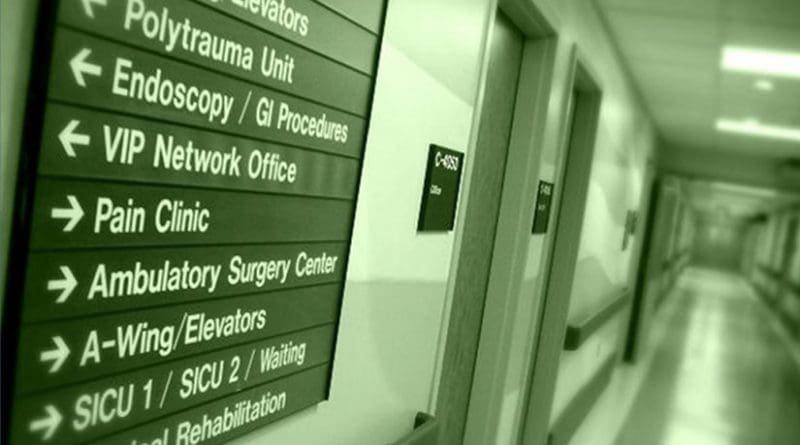Who Gets Hurt? The Pitfalls Of Managed Care In American Hospitals
By IESE Insight
Having no health insurance in the United States is a precarious situation to be in. You tend to rely on charity care and an insufficient safety-net, and you have fewer hospital options. What’s worse, a study by IESE’s Núria Mas shows, you are also more likely to die of a heart attack.
American health care is currently undergoing a transformation with the Patient Protection and Affordable Care Act (widely known as Obamacare), signed in 2010, with most major provisions in effect as of 2014. The act aims to expand access to affordable care while slowing the pace of escalating costs in a country already notorious for high-priced care. “Now more than ever, it is important to understand the effect of hospital financial stress on the quality of care the uninsured received,” Mas writes. This is the goal of her study, published in the International Journal of Health Services in 2015.
By analyzing hospital discharges in California over a decade, Mas uncovers a disturbing trend: Amid pressure on hospitals to cut costs under managed care, the quality of health care went down for uninsured patients and for anyone else who found themselves in government hospitals, a traditional provider of charity care. This trend is bad news for the uninsured and the insured alike.
A Broken Safety Net
In 2012, the number of Americans without medical insurance reached 48 million, around 15 percent of the total population. Approximately two-thirds of the uninsured were poor or near poor, according to data from 2007.
Because there is no universal health coverage in the United States, the uninsured tend to rely on charity care for serious medical conditions. Most of this charity care is provided by hospitals — especially government hospitals, teaching hospitals and those located in poor areas.
In the past, a series of cross-subsidies, referred to as a “hidden tax” on paying patients, allowed hospitals to cover the costs of charity patients. But mounting financial pressure on hospitals to cut costs is fraying this life line. In a previous article for the International Journal of Health Care Finance and Economics in 2013, Mas studied this pressure on hospitals. She found that institutions offering charity care were shuttering such crucial services as obstetrics and emergency care or closing down entirely. This has caused uninsured people, in particular, to have fewer places to go. Her 2015 article follows up with a look at who gets hurt most — analyzing the impact of managed care on the quality of care provided.
How it Happened
The rise of managed care in the United States is very relevant to both Mas’s 2013 and 2015 investigations.
The strictest form of managed care in the United States is the health maintenance organization (HMO). Since the Health Maintenance Organization Act was passed in 1973, HMOs have come to dominate U.S. healthcare. Unlike traditional insurers, HMOs require their customers to go to approved doctors and medical professionals within a network. Approved doctors and administrators must compete to keep medical costs as low as possible. The system includes financial incentives for selecting cheaper treatment options and limiting hospital stays.
Enrolment in HMOs and other managed care programs has steadily increased for decades. In 1988, 27 percent of privately insured Americans had a managed-care contract; by 2001 it was 93 percent.
Studying a Matter of Life and Death
In order to home in on the effects of managed care practices, Mas’s 2015 article follows patients admitted to and discharged from Californian hospitals following a heart attack from 1985 to 1995, the period when managed care came to dominate the region.
Focusing on heart attack patients, Mas is able to measure the quality of care received. Heart attack sufferers are a particularly good group to study because if they receive prompt and proper care, the attack need not be fatal. While measuring the quality of health care can be subjective at times, the difference between surviving a heart attack and dying from one is hard to argue with.
Mas studies the percentages of admitted patients who died and breaks it down by how patients were expected to pay (e.g., self-pay, insurance, charity), the type of hospital, and whether or not the patients came from a poor neighborhood.
The study finds high death rates among the uninsured, and also among the insured at the same government hospitals treating the uninsured. The reason is that increasing financial pressures encourage charity-care patients to concentrate into government hospitals. Government hospitals, in turn, face the challenge of providing health care to a greater proportion of non-paying patients. This outcome suggests that the strain placed on government hospitals in regions where managed care dominates is resulting in sub-par care for all.
The results provide a fresh perspective on the financial pressures faced by hospitals and their importance to our health, indicating that further research should continue to look beyond hospitals’ efficiency to analyze their effects on the overall health care market.

